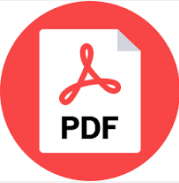Do file formats leave you puzzled? Mobi, ePub, PDF, Docx, Doc…
How was your week? Mine was quite busy – summer holidays have started. My family are competitive swimmers – so guess where I spend my summer?

Today we are going to talk about a few things. Firstly I gave a talk on Self-publishing last weekend and realized that there is a lot of confusion about the various types of file formats that we as authors deal with. I thought I’m create a primer to help you start to understand. I’m sure there will be more on this topic in the future!
Secondly, I’m visiting the blog of my friends Anne R. Allen and Ruth Harris today. Please drop over and say hi! I’m talking about book bloggers over there.
When you read a book, do you read a book?

Do you read on an ereader?

Or do you listen to books?

So many choices!
As authors we need to figure out how to create the various file formats that are used for various parts of the writing process and in fact, the various file formats that are used or uploaded to the various retail outlets so readers can buy a copy. Although I do most of my own formatting, this isn’t something I suggest for everyone. However, whether you want to do your own formatting or hire someone, you should be knowledgeable and be able to ask intelligent questions.

.DOC vs .DOCX
Starting at the very beginning, our story is likely created on a computer using either Word (or something similar) or if you have a Mac maybe you prefer Pages. Generally the industry standard is a file that was created from Word (or something similar).
The newer versions of Word produce a .docx file as the default, older versions produce a .doc file as the default. As you can read on this post on The Book Designer, the .docx file is actually an advantage for authors – it is smaller in size, more reliable, more secure and it’s future proof. If you want more details, click on the link and read more. The Book Designer is a blog that is a great source of accurate information!
For anyone who has had their work edited, the process likely occurred via a Word doc complete with track changes to help follow the process and thoughts of our editor.
The .docx file that you have when you finish the editing process is the basis for all the other files that you will need. Keep a secure copy on your computer and maybe a back up on a hard drive (if you are paranoid like me).
As mentioned above, our readers will read our work in various ways. We need to create a file to be used to create those various reading formats. This process is frequently referred to as ‘formatting.’ Although, the word ‘formatting’ can refer to many things.
Today we are going to talk about the file formats that lead to reading versions – the audio versions are another post in the future. The 3 major file formats we will need are: Mobi, ePub and PDF. Let’s talk about each one.

Mobi
A Mobi file is a proprietary file type that was created by Amazon to be read by their ereader – the Kindle. It isn’t a file type that is use by any other ereader – only the Kindle. Generally a Mobi is created using a .docx as a starting point. There are many, many different ways to create a Mobi. There are websites that offer to do the conversion, many of the retailers (KDP, Draft2Digital, etc) will do it for you, there are programs like Calibre, Vellum, Sigil – the list is endless. In actual fact, you can upload a .doc or .docx directly to Amazon via your KDP dashboard and they can create the Mobi for you. Choose carefully, though as not all formatting processes create an identical product. The last thing you want readers to complain about is random odd characters appearing in the text of your story – and yes this does happen!
I do my own formatting so that I will have my own copy of the Mobi file to email out to reviewers directly rather than go though Amazon for a copy.

ePub
An ePub file is the file type that is read by every other ereader in existence. The Nook, the Kobo reader, The Sony ereader, Adobe Digital Editions and many reading apps – they all read the ePub format. Like the Mobi, there are many different ways to create an ePub file – from website based services, to programs to actually many of the retailers. The starting point is generally a .doc or .docx and as above, all formatting is not created equal. Make sure that whatever process you choose results in a flawless reading experience for your readers.
Like above, I do my own formatting so that I will have my own copy of the ePub file to email out to reviewers directly.

The PDF is the basis for a print copy of a book. It’s often said that the Mobi and ePub file create moveable type that is suitable for an ereader, but a PDF produces a more rigid type of file. Typically the PDF is created directly from the .doc or .docx once other formatting has been done to the file. The page size is set, the margins are chosen and headers/footers and page numbers are created. This file can then be ‘saved’ to a PDF. Note that a PDF can’t be converted back into a .doc or .docx – all sorts of formatting issues are introduced if that is attempted.
There are two common ways of creating a PDF – as above, by ‘saving’ from Word or by using InDesign – an Adobe program. Interestingly, the two PDFs are not the same. CreateSpace will accept a Word to PDF type of PDF but not Ingram Sparks. Ingram requires a PDF generated by InDesign.
Do you feel like this now?

No worries – more on this in the future!
*****
For the latest news – I have added several new videos to my YouTube channel around setting up a social media profile properly. If you need a quick tutorial, drop by and see what you can learn. I’m in the final stages of finishing off the analysis of the Book Blogger Survey 2016. I sent it off to be edited just this morning so it should be available for purchase in a week or so. Lastly, a box set should be out this coming week also. Box sets are always a cheaper way of getting books than purchasing each one – and I’m all about educating as efficiently as possible!
Until next time – if you are looking for some free books to help jumpstart your understanding of technical stuff, click HERE to join. If you think this post would help someone you know, feel free to use those little share buttons below to share it with them!
The post Do file formats leave you puzzled? Mobi, ePub, PDF, Docx, Doc… appeared first on Bakerview Consulting.



